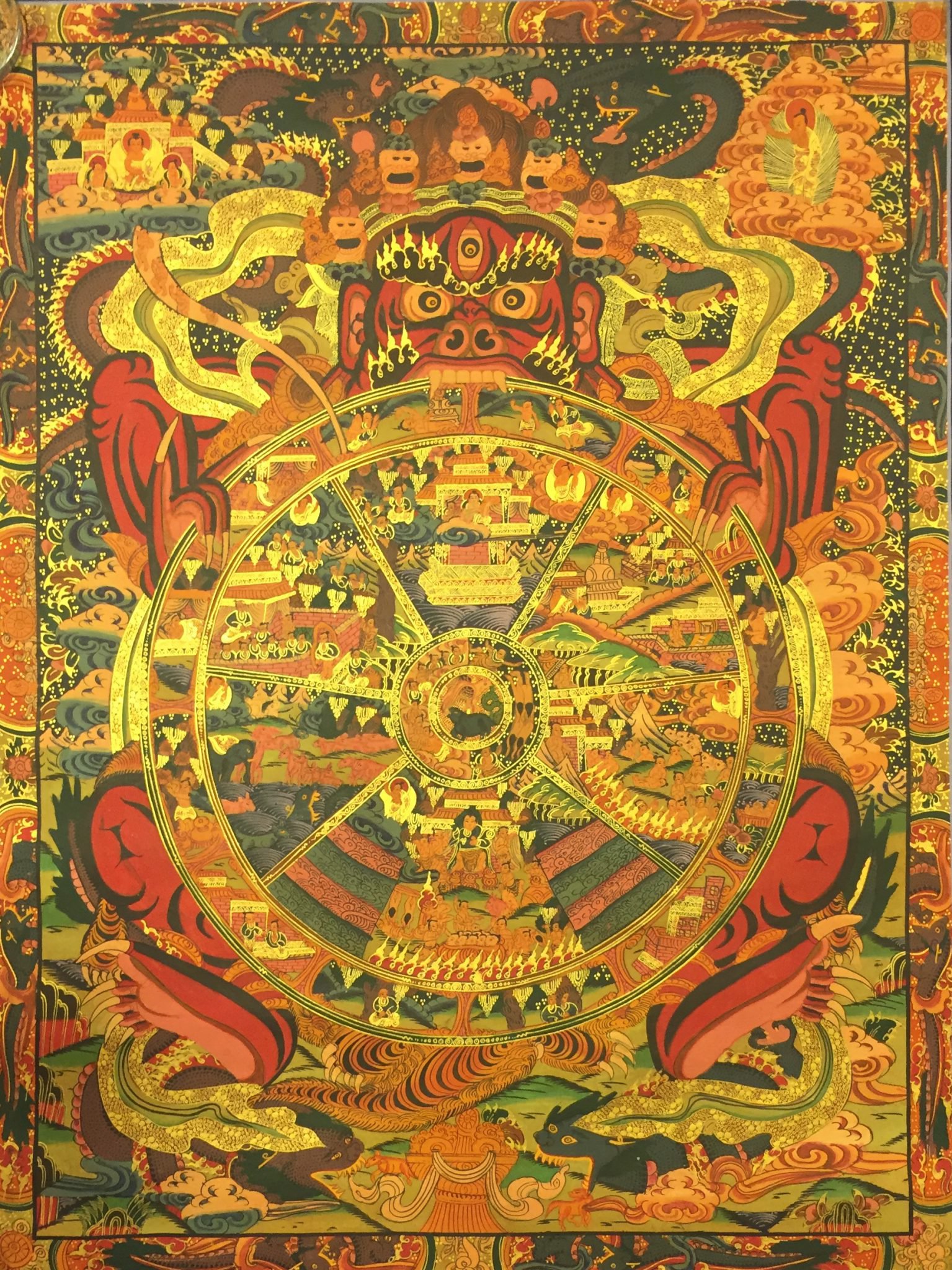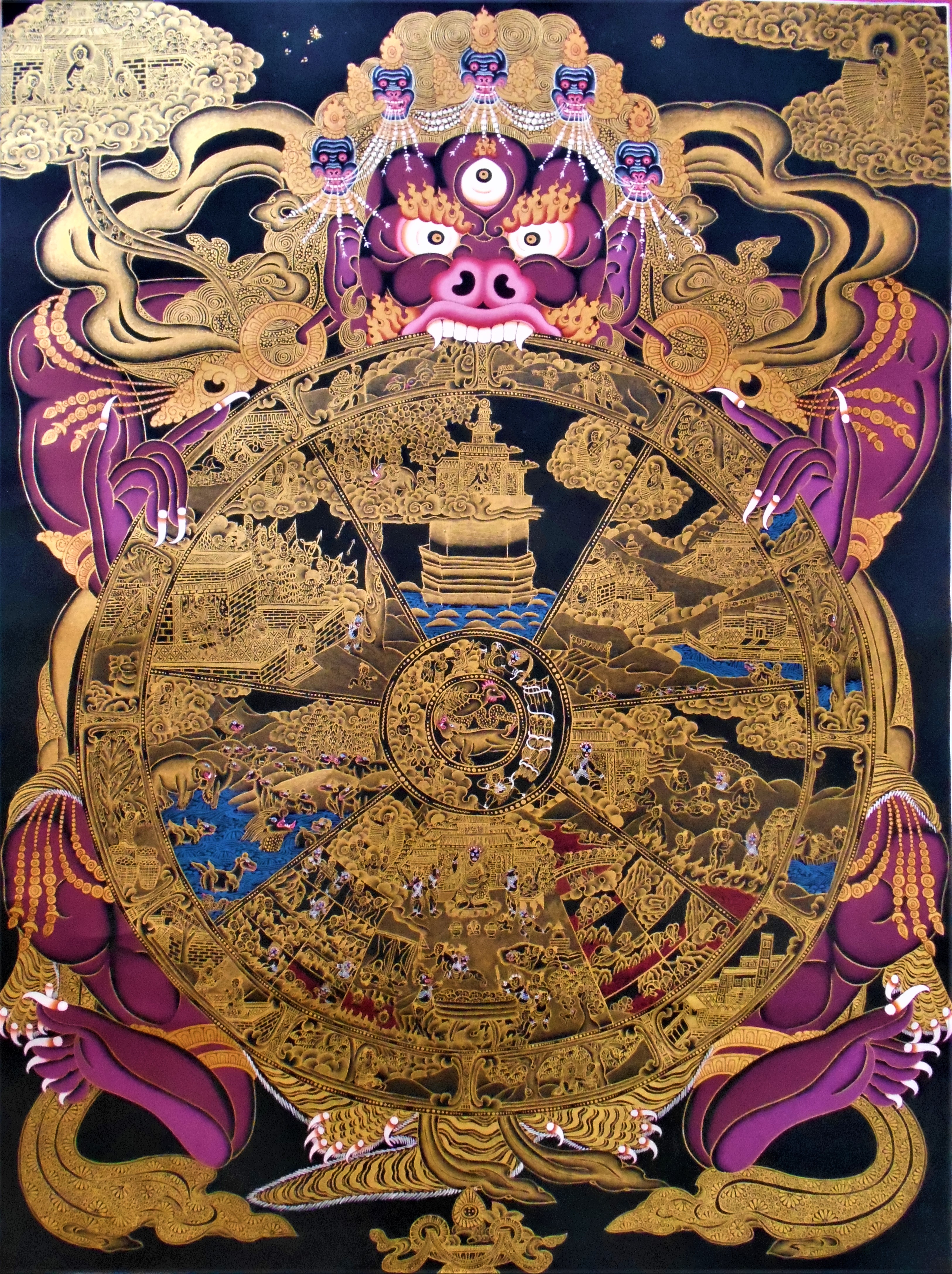

Silk Framed Wheel of Life Thangka
Silk Framed Wheel of Life Thangka is handpainted in Kathmandu Nepal. This Wheel of Life of Thangka comes with a silk Frame.
he Bhavachakra, the Wheel of Life or Wheel of Becoming, is a thangka which is a complex picture representing the Buddhist view of the universe. To Buddhists, existence is a cycle of life, death, rebirth, and suffering that they seek to escape altogether.
Iconography
The Wheel is divided into five or six realms, or states, into which a soul can be reborn. It is held by a demon. Around the rim are depicted the twelve stages of dependent origination. The rich iconography of the Wheel of Life can be interpreted on several levels. The six major sections represent the Six Realms. These realms can be understood as forms of existence, or states of mind, into which beings are born according to their karma. The realms also can be viewed as situations in life or even personality types—hungry ghosts are addicts; devas are privileged hell-beings have anger issues.
Realms
In each of the realms, the Bodhisattva Avalokiteshvara appears to show the way to liberation from the Wheel. But liberation is possible only in the human realm. From there, those who realize enlightenment find their way out of the Wheel to Nirvana.
The Wheel of Life is one of the most common subjects of Buddhist art. The detailed symbolism of the Wheel can be interpreted on many levels.
The Wheel of Life (called the Bhavachakra in Sanskrit) represents the cycle of birth and rebirth and existence in samsara.
Many Buddhists understand the Wheel in an allegorical, not literal, way. As you examine the parts of the wheel you might find yourself relating to some of it personally or recognizing people you know as Jealous Gods or Hell Beings or Hungry Ghosts.
The outer circle of the Wheel is the Paticca Samuppada, the Links of Dependent Origination. Traditionally, the outer wheel depicts a
- Blind man or woman (representing ignorance)
- Potters (formation)
- A monkey (consciousness)
- Two men in a boat (mind and body)
- A house with six windows (the senses)
- An embracing couple (contact)
- An eye pierced by an arrow (sensation)
- A person drinking (thirst)
- A man gathering fruit (grasping)
- A couple making love (becoming)
- A woman giving birth (birth)
- The man carrying a corpse (death)












